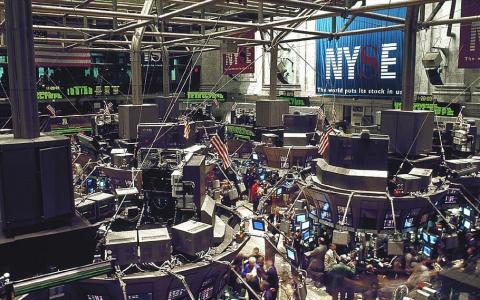
Another great market commentary piece from 3D/L. Want to work with them, pass on the insights to your clients or just ask about any of their assumptions? The VIP Messenger is right here.
---------------------
To paraphrase Mark Twain, the sharp risk-on equity advance starting last November has a similar rhythm to that of the 1999 Internet Bubble characterized by layperson day traders and Yahoo! Finance chat rooms. Just replace E-Trade with Robinhood (a steroid version of discount brokerage offering commission-free options trading and seemingly limitless margin borrowing) and Yahoo! Chat rooms with Reddit (Wall Street Bets – an online group that has grown to over 7 million members from just 400,000), and you have a market environment eerily similar to that of cab drivers bragging about their own private islands from all the profits they made from day trading (pre-tax of course – many a sob story of day traders having to pay short-term capital gains even after the Dot-Com collapse in 2000).
We are in a phase of the markets where the establishment country clubs of institutional trading are seeing their gates threatened by hordes of retail traders fueled by a chum of cost-free trading, ‘big fat stimmy checks,” and vocal support from notable technology executives egging them on through social media blasts. We will not write about the particulars of this tug-of-war happening in the markets (see this SFW video from Disrn’s Adam Ford although you will need to look up terms for YOLO, Diamond Hands, and Tendies). Rather than this battle representing the future viability of a ‘left-for-dead’ mall retailer (of which some sympathy should be placed towards management and employees caught in the middle of this tug-of-war), the Reddit/hedge fund battle narrative has morphed into a grander ‘us-versus-them’ with a younger generation of traders and tech executives trying to break down the country club doors of institutional traders, bankers, and regulators.
This month’s tongue-in-cheek title refers to a once-in-a-generation moment of extreme market excess (although some still argue we are nowhere near 1999-type euphoric sentiment). Obviously, retail traders can ‘trade’ multiple times, especially when such trading is ‘free’, but we do believe we are witnessing one of those once-in-a-generation ‘perfect storm’ moments of easy financial conditions fueled by 1) central bank quantitative easing and negative inflation-adjusted interest rates, 2) technology disintermediation from trading apps to chat rooms whose member activity falls outside the purview of financial regulators, and 3) investor disinterest of ‘fundamental valuations’, preferring the promises of tomorrow’s technology promises.
At least the financial plumbers (i.e. DTCC, OTC, SEC) are pushing back on the speculative fervor characterized by a surge in call option trading volume to historic levels along with frenzied demand for Special Purpose Acquisition Vehicles that bring technology ventures to the public markets, bypassing the initial public offering process. January also witnessed parabolic price action of the most shorted stocks.
However, the countermeasures to curb this speculative activity by our financial plumbers (regulators, clearing firms) have merely limited the amount and volume that can be traded on margin in high short interest stocks where the rate to borrow shares is extremely high rather than curb long-term appetites. Ultimately, any platform that enables its users to trade on ‘margin’ needs to be sufficiently capitalized to handle a certain level of leveraged transactions, especially if those levered positions are in illiquid, highly volatile securities. And we may have reached that point towards the end of the month resulting in an unusual spike in market volatility and churning.
What is interesting is the limits to which regulators can clamp down on group-driven trading activity of the kind seen with Reddit community groups. Regulators can only crack down on ‘pump-and-dump’ schemes egged on by the spread of fraudulent and material misinformation in an organized manner. As one investor we correspond with put it: it’s a difference between banding together around a ‘belief’ (one can argue there is a fundamental thesis for investing heavily in certain highly shorted securities) as opposed to ‘false information.’ In the end, retail investors have organized themselves to form a large enough trading bloc to take advantage of the market structures that make short squeezes possible as long as such trading is not rooted in fraud.
The remainder of the financial plumbing system seems unperturbed for now as evidenced by stable overnight lending rates, muted currency volatility, and rangebound fixed income credit spreads. If the tendies-fueled diamond hands were forced to unwind their positions resulting in a major bout of market volatility, the broader capital markets are not indicating any systemic-type stress to the overall financial system. Recall that it took a couple years (including 9/11) for the telecom debt issue market to blow up following the 2000 collapse of the Internet Bubble.
We are unsure what the ultimate endgame of all this is, especially if the world is able to re-emerge from the pandemic caves we’ve been living in over the past year. With overall short interest in the market having reached near-historic lows (as we highlighted in our 2020 Year-End Market Commentary), the market rockets ever higher with one less fuel source of investor demand. For now, the burden of proof remains on the skeptic as extraordinarily accommodative monetary policy, a pandemic recovery and a future of clean tech and technology disintermediation help cast aside any notions of ‘fundamental valuation.’



